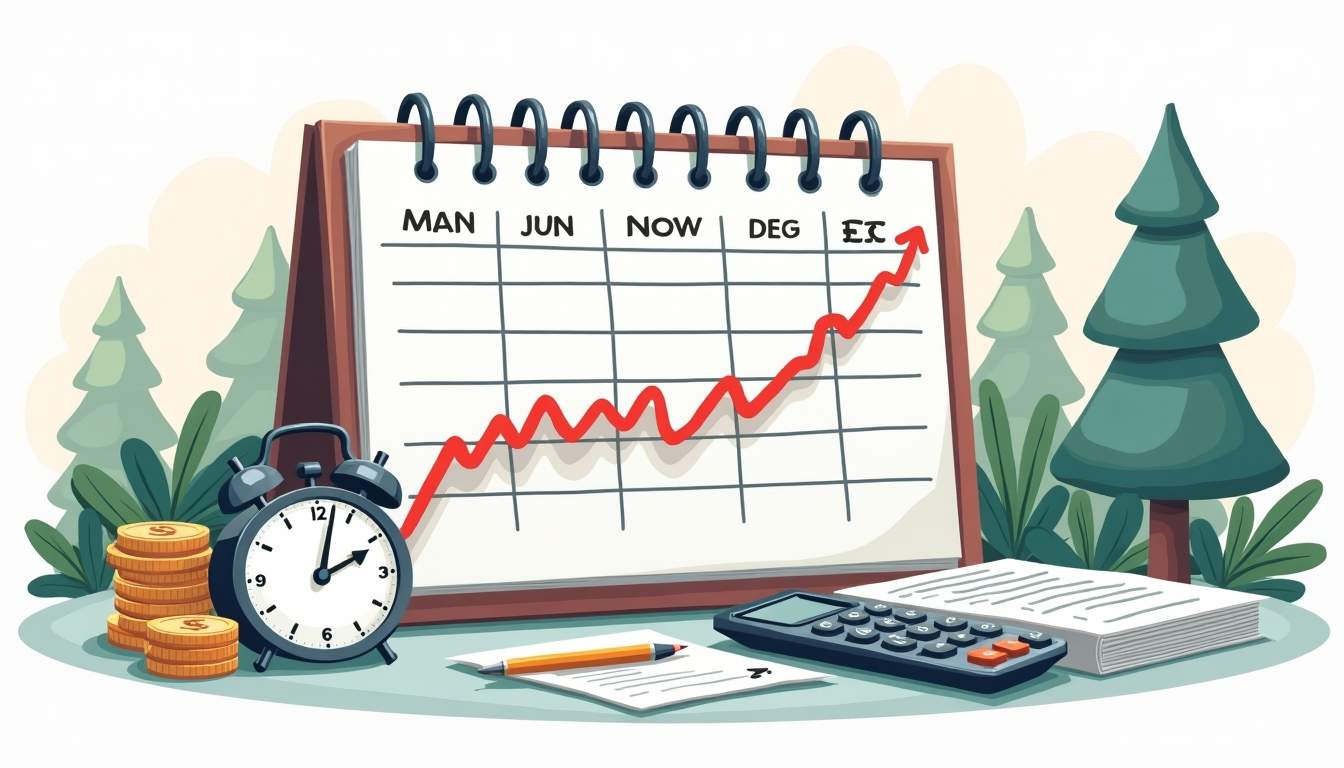Investing is a powerful way to grow your wealth over time, but taxes can significantly erode your returns if you’re not careful. Understanding how to invest in a tax-efficient manner allows you to keep more of what you earn, accelerating your path to financial goals. This article explores practical strategies and insights to help you minimize tax liabilities while maximizing investment growth.
Understanding the Impact of Taxes on Your Investments
Before diving into specific strategies, it’s essential to grasp how taxes affect your investment returns. Taxes come in various forms—capital gains tax, dividend tax, interest income tax, and even taxes on certain retirement account withdrawals. Each type of tax can chip away at your earnings, sometimes substantially.
For example, if you sell a stock that has appreciated in value, you may owe capital gains tax on the profit. Short-term capital gains (on assets held for less than a year) are usually taxed at your ordinary income tax rate, which can be quite high. Long-term capital gains (on assets held for more than a year) enjoy lower tax rates, but they still reduce your overall returns.
Dividends can also be taxed differently depending on whether they are qualified dividends or ordinary dividends. Qualified dividends are taxed at the lower capital gains rates, while ordinary dividends are taxed at your regular income tax rate. Interest income, such as from bonds or savings accounts, is usually taxed at ordinary income rates as well.
Additionally, it’s important to consider how tax-loss harvesting can play a role in your investment strategy. This technique involves selling securities at a loss to offset capital gains tax liabilities. By strategically realizing losses, investors can potentially reduce their taxable income and enhance their overall investment returns. This approach requires careful planning and an understanding of the wash-sale rule, which disallows the deduction of a loss if the same or substantially identical security is repurchased within 30 days.
Moreover, tax-advantaged accounts such as IRAs and 401(k)s can significantly alter the tax landscape for your investments. Contributions to these accounts may be tax-deductible, and the growth within these accounts is typically tax-deferred until withdrawal. This means that you can potentially accumulate a larger nest egg over time, as your investments can grow without the drag of annual taxes. However, it’s crucial to be aware of the tax implications upon withdrawal, especially if you are taking distributions before the age of 59½, which can incur penalties and additional taxes. To learn more about optimizing your retirement strategy, visit here.
Choose the Right Investment Accounts for Tax Efficiency
Utilize Tax-Advantaged Retirement Accounts
One of the most effective ways to reduce your tax burden is to invest through tax-advantaged retirement accounts like 401(k)s, Traditional IRAs, and Roth IRAs. These accounts offer different tax benefits depending on their structure.
Contributions to a Traditional IRA or 401(k) are typically made with pre-tax dollars, lowering your taxable income in the contribution year. The investments grow tax-deferred, meaning you don’t pay taxes on earnings until you withdraw the money in retirement. This deferral can allow your investments to compound more efficiently over time. Moreover, many employers offer matching contributions to 401(k) plans, which can significantly enhance your retirement savings without additional cost to you.
Roth IRAs, on the other hand, are funded with after-tax dollars. While you don’t get a tax deduction when you contribute, qualified withdrawals in retirement are tax-free, including any earnings. This can be especially beneficial if you expect to be in a higher tax bracket later or want to avoid required minimum distributions (RMDs). Additionally, Roth IRAs allow for more flexible withdrawal options; you can withdraw your contributions at any time without penalty, making it a versatile tool for both retirement and emergency savings.
Leverage Health Savings Accounts (HSAs)
Health Savings Accounts are often overlooked but offer a triple tax advantage: contributions are tax-deductible, earnings grow tax-free, and withdrawals for qualified medical expenses are tax-free. If you have a high-deductible health plan, maxing out your HSA contributions can be a smart way to invest tax-efficiently while preparing for healthcare costs. Furthermore, HSAs can serve as a supplemental retirement account; after age 65, you can withdraw funds for non-medical expenses without penalty, although those withdrawals will be taxed as ordinary income.
Consider Taxable Accounts Strategically
While tax-advantaged accounts are great, you may also want to invest in taxable brokerage accounts for flexibility and access to a broader range of investment options. The key is to manage these accounts with tax efficiency in mind.
One approach is to hold tax-efficient investments, such as index funds and exchange-traded funds (ETFs), in taxable accounts. These funds typically generate fewer taxable distributions compared to actively managed funds, reducing your annual tax bill. Additionally, you can employ tax-loss harvesting strategies in taxable accounts, where you sell losing investments to offset gains elsewhere, thus minimizing your overall tax liability. This proactive management can significantly enhance your after-tax returns and help you keep more of your investment gains over time.
Focus on Tax-Efficient Investment Choices
Favor Index Funds and ETFs
Index funds and ETFs are popular for their low fees and tax efficiency. Because they track a market index and have lower turnover, they generate fewer capital gains distributions. This means you won’t owe taxes on gains you didn’t realize by selling shares.

Additionally, ETFs have a unique creation and redemption mechanism that allows them to minimize capital gains distributions, making them particularly tax-friendly in taxable accounts.
Use Tax-Managed Funds
Tax-managed mutual funds are designed to minimize taxable distributions. Fund managers employ strategies like harvesting losses, avoiding short-term gains, and limiting turnover to reduce the fund’s tax impact on investors.
While these funds may have slightly higher fees than index funds, the tax savings can often outweigh the cost, especially for investors in higher tax brackets.
Consider Municipal Bonds for Tax-Free Income
Municipal bonds, issued by state and local governments, often provide interest income that is exempt from federal income tax—and sometimes state and local taxes if you live in the issuing state. This can make them an attractive option for investors seeking tax-free income, particularly those in higher tax brackets.
However, it’s important to evaluate the credit quality and yield of municipal bonds relative to taxable alternatives to ensure they fit your investment goals.
Implement Tax-Loss Harvesting
Tax-loss harvesting is a strategy that involves selling investments at a loss to offset gains realized elsewhere in your portfolio. This can help reduce your taxable income and, consequently, your tax bill.
For example, if you sold a stock for a $5,000 gain, you could sell another investment at a $5,000 loss to offset that gain, effectively eliminating the capital gains tax on the sale. If your losses exceed your gains, you can use up to $3,000 of excess losses to reduce ordinary income each year, with additional losses carried forward to future years.
It’s important to be mindful of the IRS wash-sale rule, which disallows a loss deduction if you buy a substantially identical security within 30 days before or after the sale. To avoid this, you can purchase a similar but not identical investment or wait the required period before repurchasing.
Be Mindful of Asset Location
Asset location refers to placing different types of investments in the most tax-efficient accounts. This strategy can significantly enhance after-tax returns.

For example, investments that generate ordinary income, such as bonds and REITs (real estate investment trusts), are often best held in tax-advantaged accounts to shield the income from current taxation. Conversely, tax-efficient investments like broad-based stock index funds can be held in taxable accounts, where their qualified dividends and long-term capital gains are taxed at lower rates.
By thoughtfully allocating assets between taxable and tax-advantaged accounts, investors can reduce their overall tax burden and improve portfolio growth.
Plan for Required Minimum Distributions (RMDs)
Once you reach age 73 (as of 2024), the IRS requires you to start taking required minimum distributions from Traditional IRAs and 401(k)s. These withdrawals are taxed as ordinary income and can increase your tax bill significantly.

Planning ahead for RMDs can help you manage your tax liability. Strategies include:
- Roth Conversions: Gradually converting Traditional IRA assets to a Roth IRA before RMDs begin can reduce future taxable withdrawals since Roth IRAs don’t have RMDs during the owner’s lifetime.
- Charitable Donations: Qualified charitable distributions (QCDs) allow you to donate directly from your IRA to a qualified charity, satisfying your RMD requirement without increasing taxable income.
- Withdrawal Timing: Strategically timing withdrawals in years with lower income can help minimize the tax impact of RMDs.
Stay Informed and Work With Professionals
Tax laws and regulations are complex and subject to change. Staying informed about current tax rules and how they apply to your investments is crucial for effective tax-efficient investing.
Working with financial advisors and tax professionals can provide personalized guidance tailored to your financial situation. They can help you navigate tax planning strategies, optimize your investment portfolio, and ensure compliance with tax regulations.
Additionally, using tax software or investment platforms that provide tax reporting and analysis can simplify the process of tracking tax implications and making informed decisions.
Conclusion
Tax-efficient investing is not about avoiding taxes altogether but about managing and minimizing tax liabilities to keep more of your hard-earned money working for you. By understanding how taxes impact your investments, choosing the right accounts, selecting tax-efficient investments, and employing strategies like tax-loss harvesting and asset location, you can significantly enhance your after-tax returns.
Remember, the goal is to build a portfolio that aligns with your financial objectives while thoughtfully considering tax consequences. With careful planning and ongoing attention, tax-efficient investing can be a powerful tool to help you achieve greater financial success.


